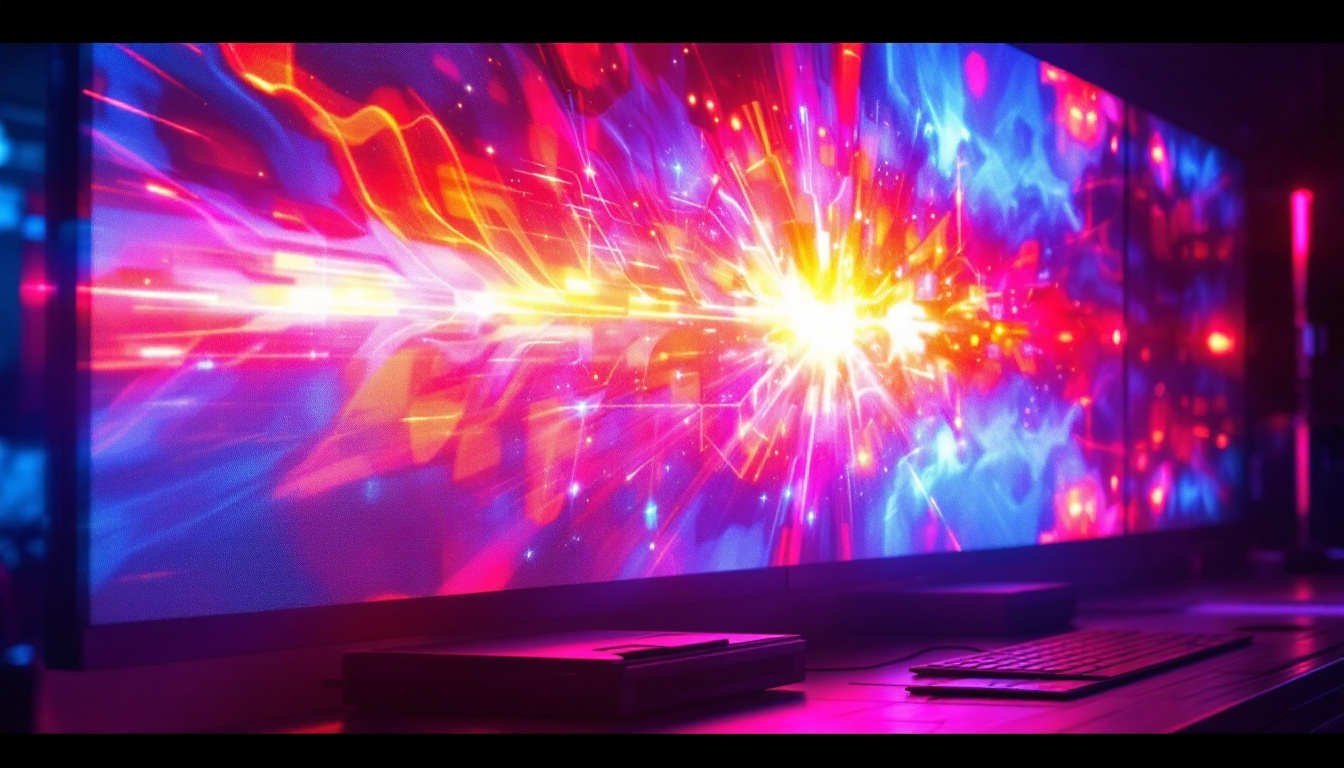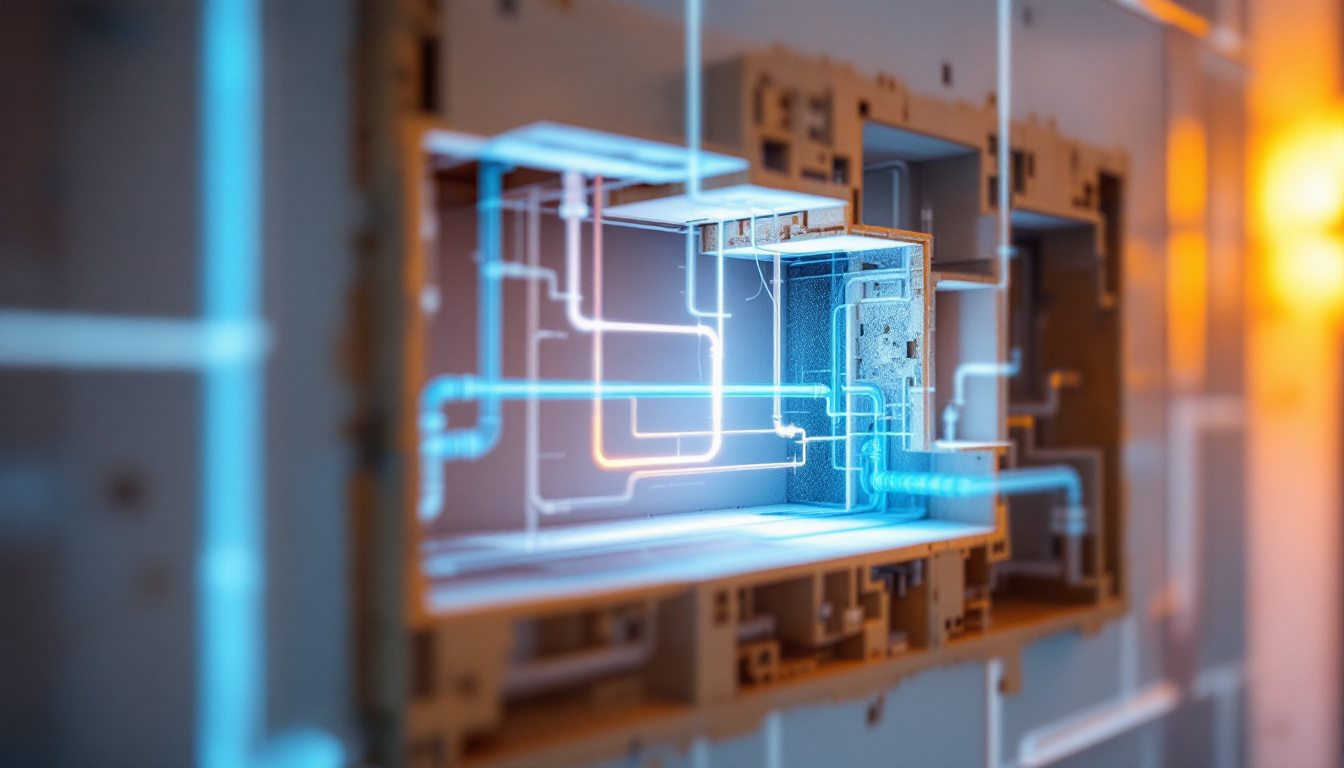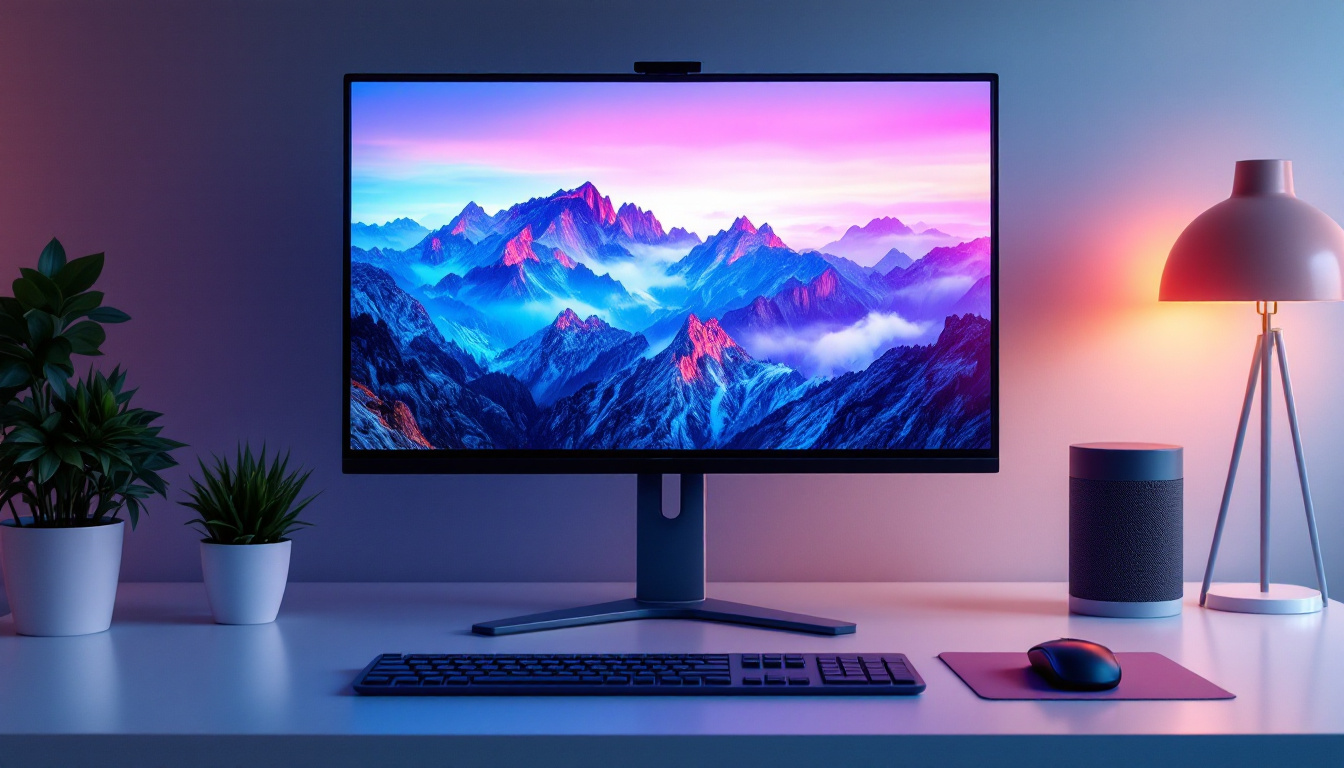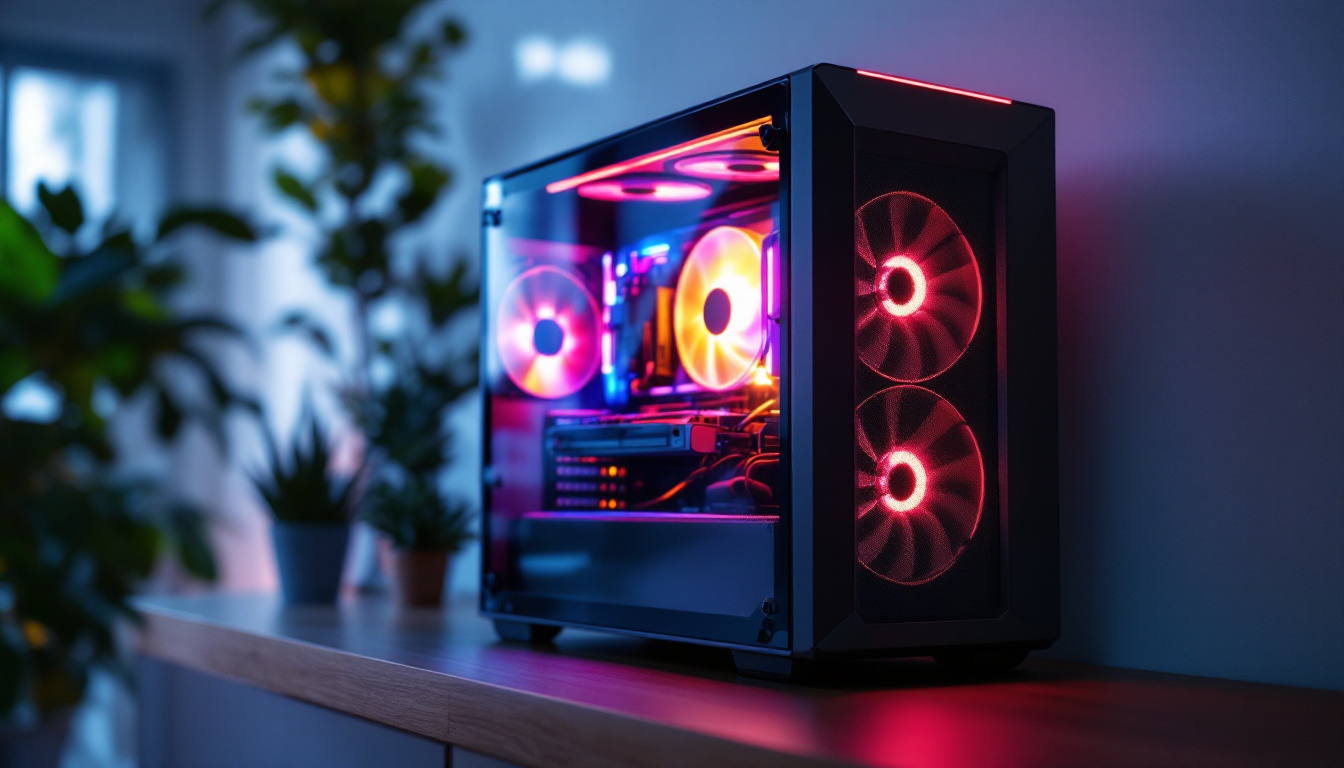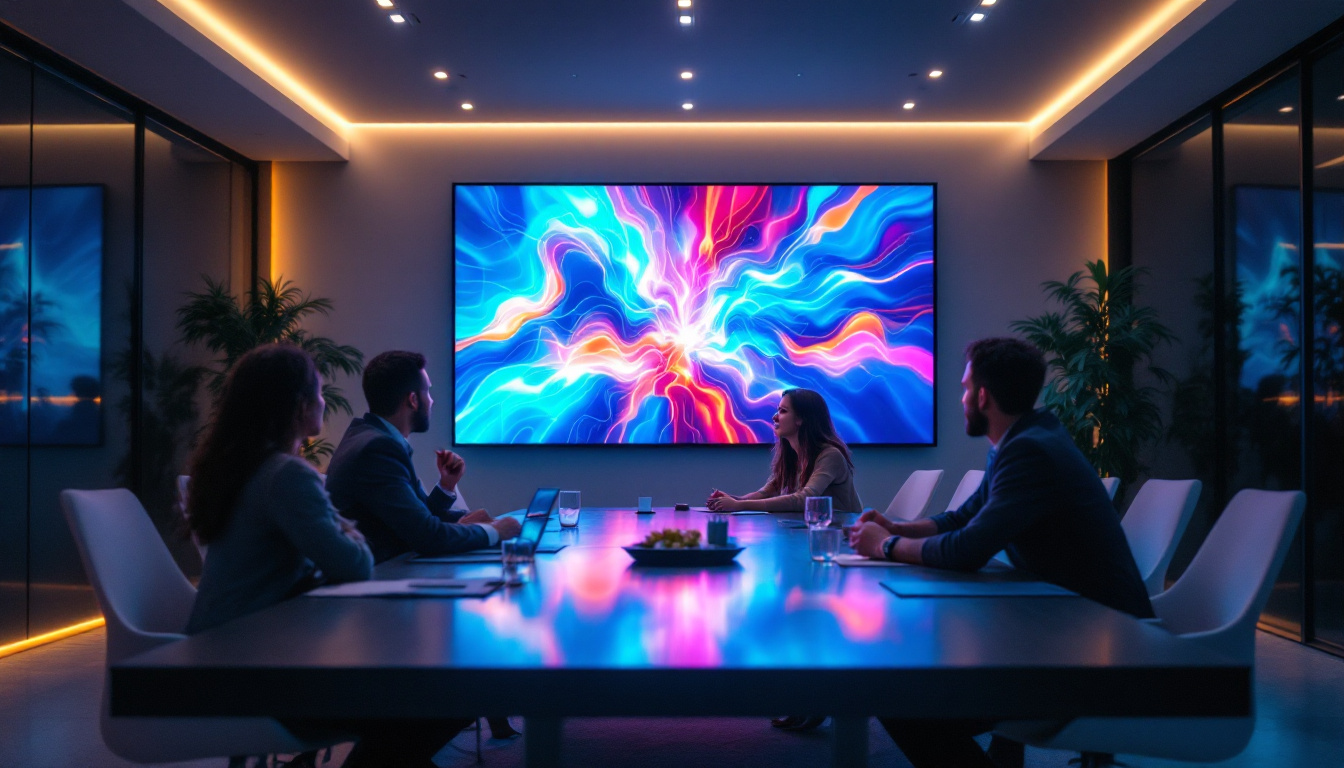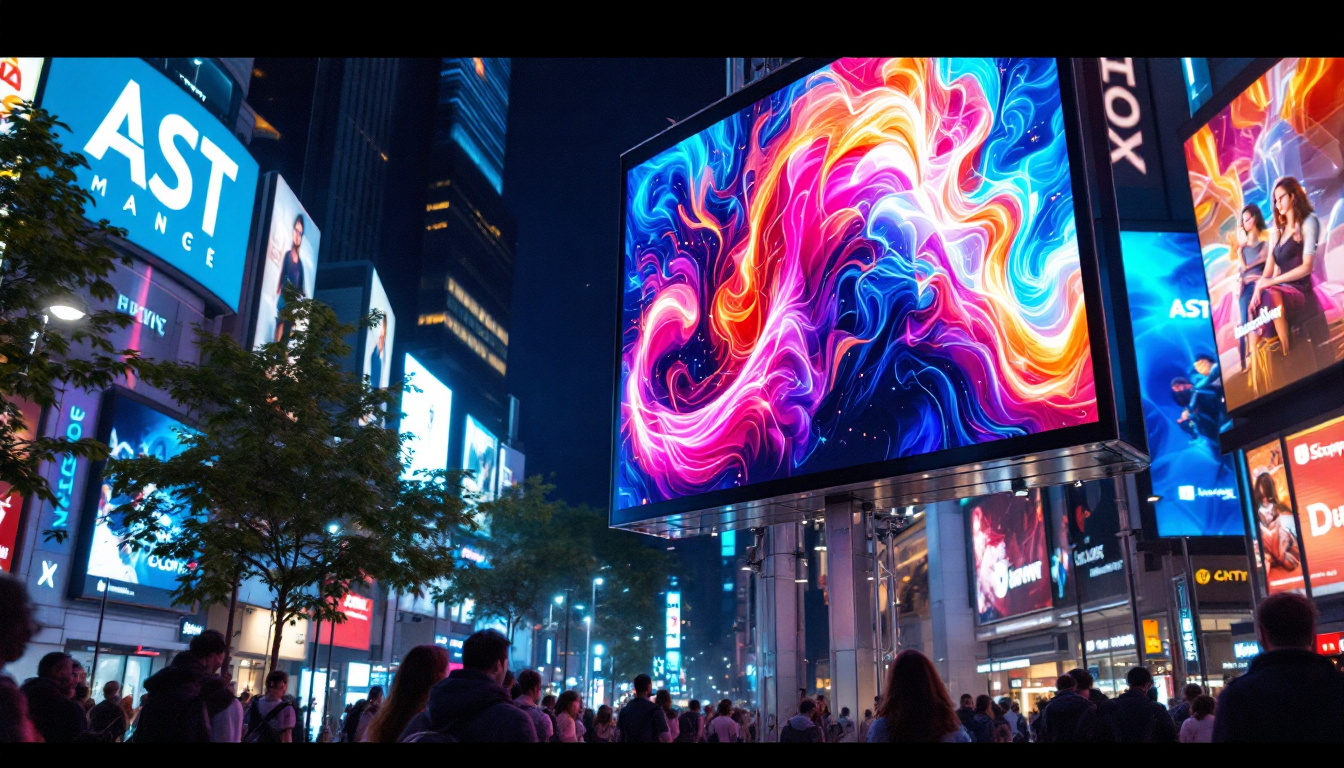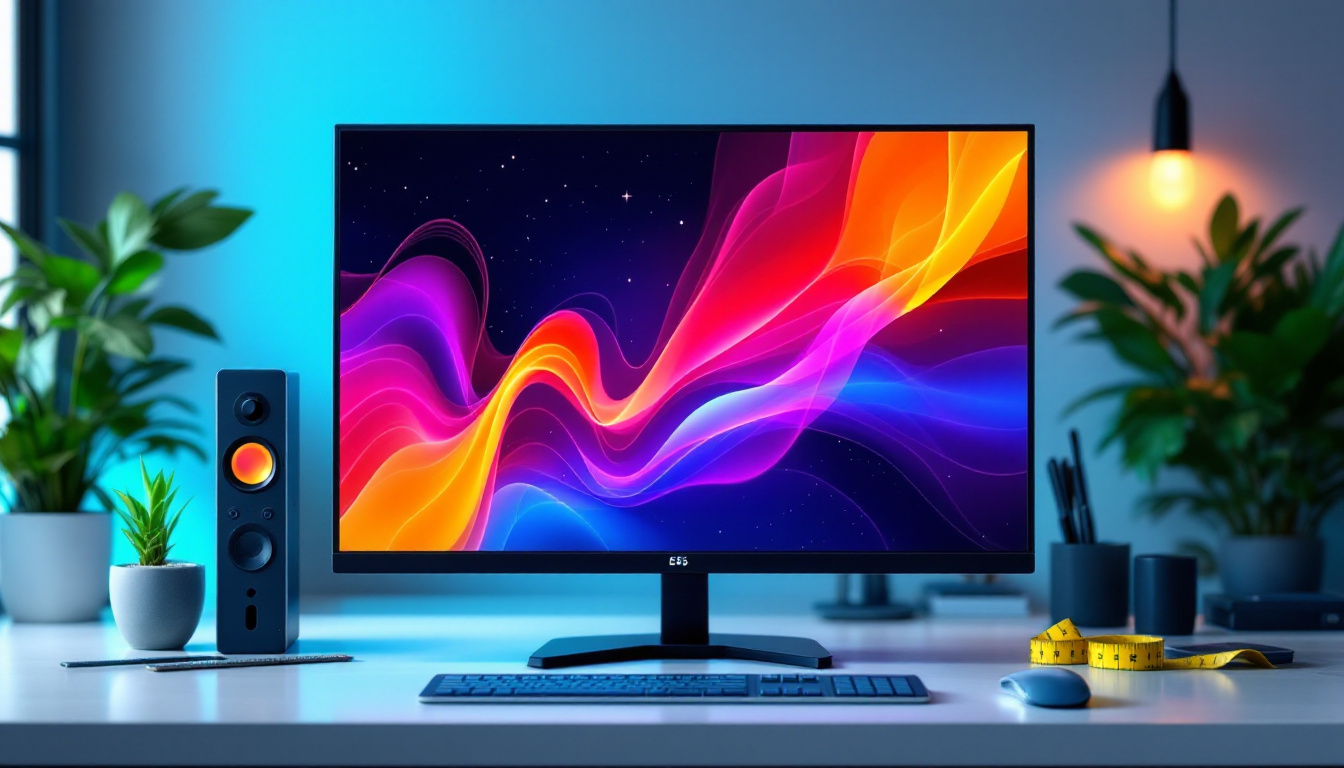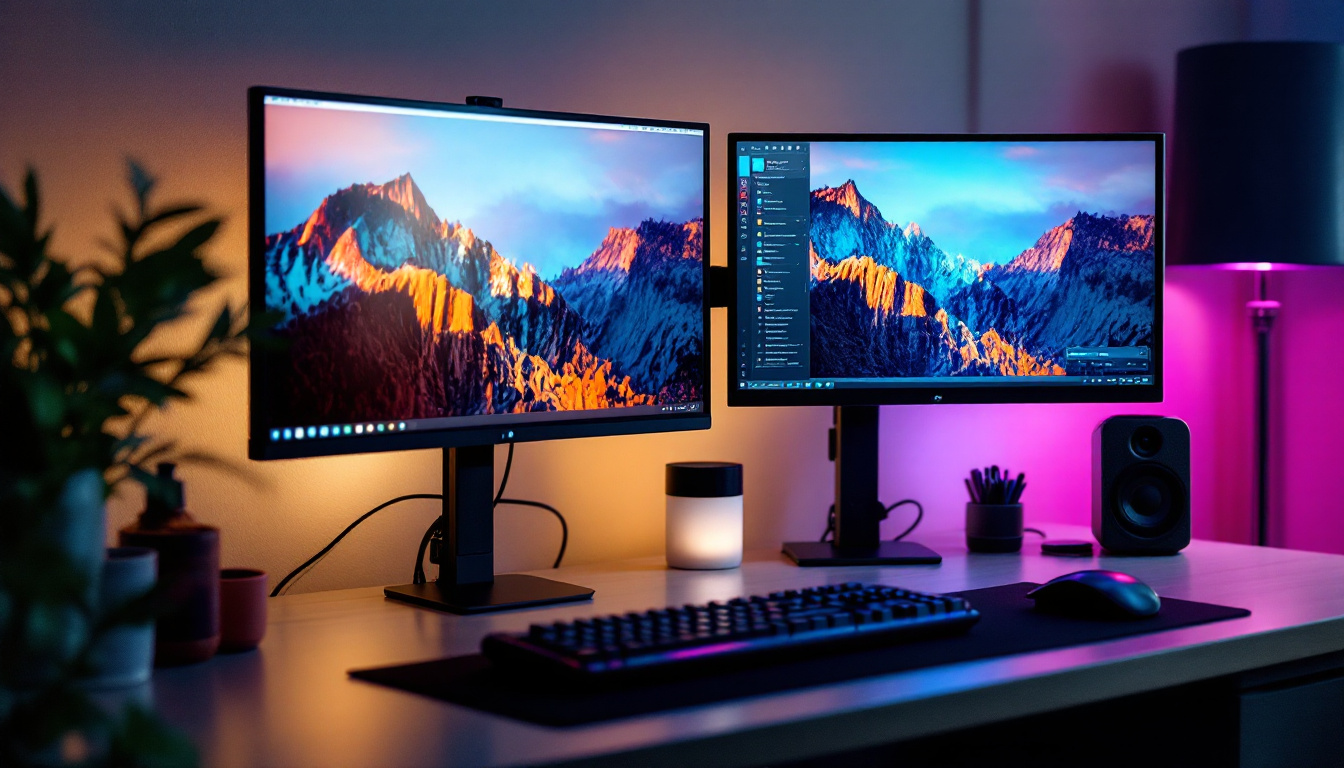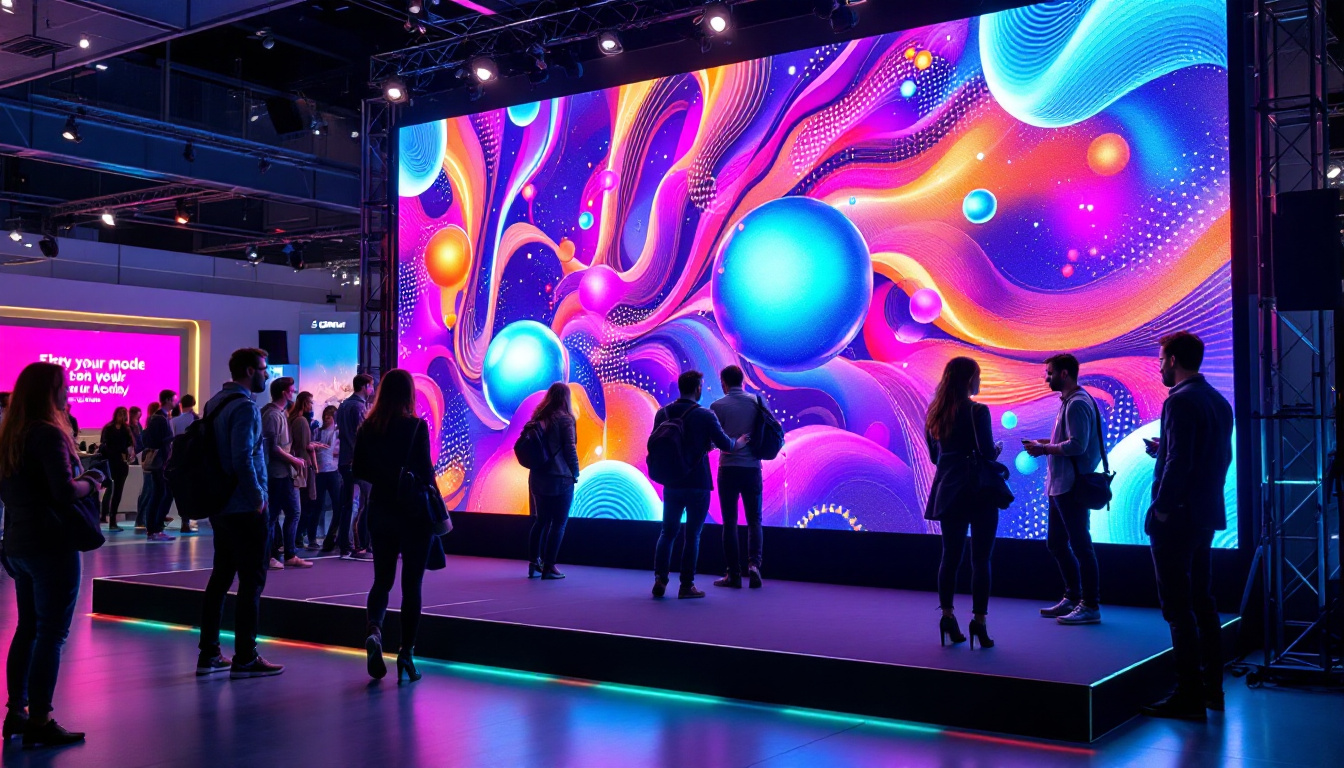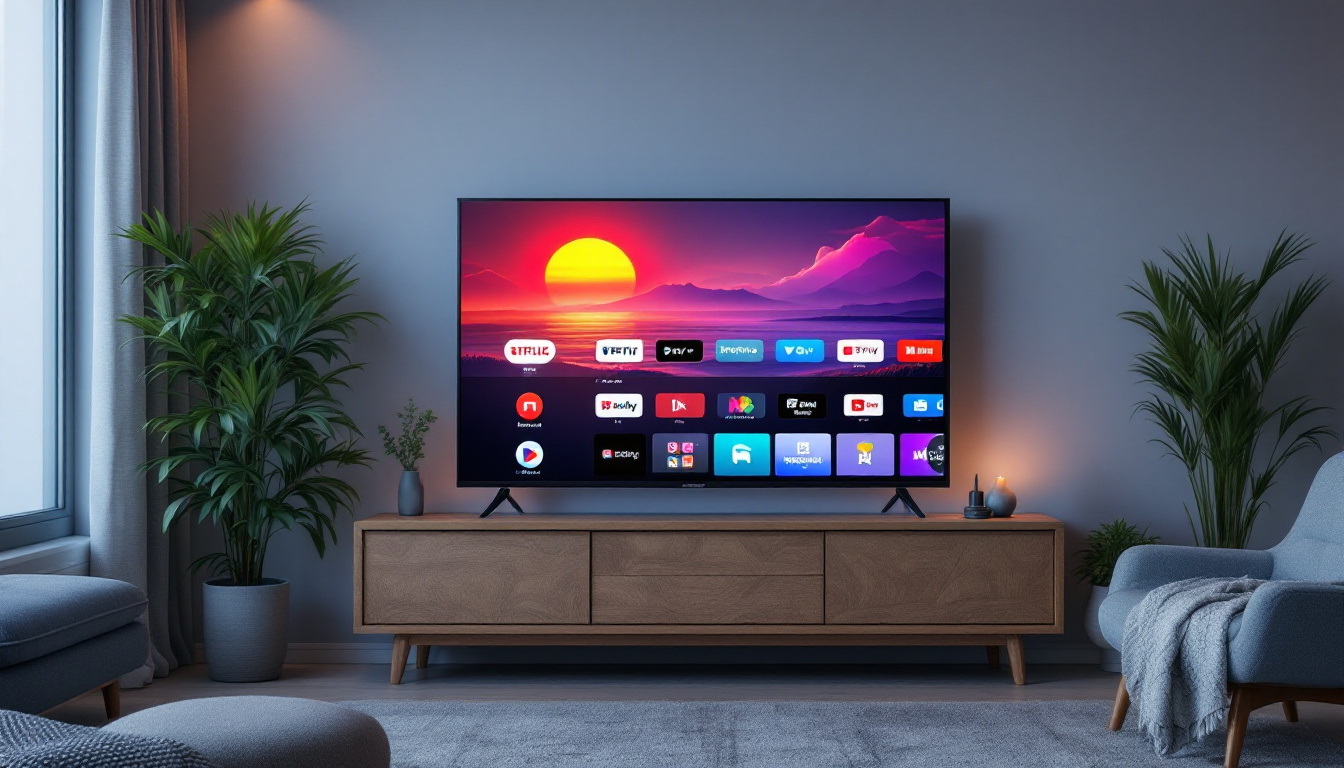In recent years, the integration of technology into our living spaces has transformed the way we interact with our environments. One of the most significant advancements in this area is the rise of LCD in-wall LED displays. These sleek, modern screens not only enhance the aesthetics of a room but also provide unparalleled functionality. This article delves into what LCD in-wall LED displays are, their benefits, installation processes, and their impact on various environments.
Understanding LCD In-Wall LED Displays
LCD in-wall LED displays are flat panel screens designed to be embedded within the wall structure of a room. Unlike traditional televisions that sit on furniture or stands, these displays create a seamless look, blending into the architecture of the space. They utilize liquid crystal display (LCD) technology combined with LED backlighting, resulting in vibrant colors and sharp images.
The Technology Behind LCD Displays
At the core of an LCD display is the liquid crystal technology that manipulates light to create images. When an electric current passes through the liquid crystals, they align to allow varying amounts of light to pass through, producing different colors and brightness levels. The addition of LED backlighting enhances this process by providing a brighter and more energy-efficient light source compared to traditional fluorescent backlighting. This combination not only improves picture quality but also contributes to lower energy consumption, making LCD displays an environmentally friendly choice.
Benefits of In-Wall Installation
Choosing an in-wall installation for an LCD display offers several advantages. Primarily, it saves space, allowing for a cleaner and more organized appearance in a room. This is particularly beneficial in smaller spaces where every inch counts. Additionally, in-wall displays can reduce the risk of damage since they are less accessible to accidental bumps or falls.
Moreover, in-wall installations can enhance the overall design of a room. They can be framed with custom cabinetry or integrated into existing architectural features, making them a focal point without appearing out of place. This versatility is appealing to homeowners and designers alike. Furthermore, in-wall displays can be equipped with advanced features such as smart technology integration, allowing users to control their viewing experience through voice commands or mobile applications. This modern convenience adds to the allure of in-wall displays, making them not just a functional addition but also a sophisticated element of contemporary home design.
In addition to aesthetic advantages, in-wall installations can also improve sound quality. By strategically placing speakers within the wall or using soundbar technology that complements the display, homeowners can create an immersive audio experience that enhances viewing pleasure. This integration of visual and auditory elements can transform a simple movie night into a cinematic experience, making in-wall LCD displays an attractive option for entertainment enthusiasts.
Installation Process of LCD In-Wall LED Displays
The installation of an LCD in-wall LED display requires careful planning and execution. It is essential to consider factors such as location, wiring, and wall structure before proceeding. Here’s a closer look at the steps involved in the installation process.
Planning and Preparation
The first step is to determine the ideal location for the display. Factors such as viewing angle, distance from seating, and access to power sources must be taken into account. Once the location is chosen, the wall must be assessed to ensure it can support the display’s weight and accommodate any necessary wiring.
Next, a professional installer will typically create a template to outline the dimensions of the display on the wall. This helps visualize how the screen will fit into the space and ensures accurate cutting of the wall material.
Wiring and Mounting
Wiring is a critical aspect of the installation process. The display requires power and signal cables, which must be routed through the wall. This often involves cutting openings for the cables and ensuring they are safely secured to prevent damage or interference.
Once the wiring is in place, the mounting bracket is installed. This bracket will hold the display securely in place, ensuring it remains flush with the wall. After the bracket is mounted, the display can be carefully attached, taking care to connect all necessary cables.
Finishing Touches
After the display is mounted, the final step involves concealing any visible cables and ensuring the wall is restored to its original appearance. This may involve patching up any cuts made during the installation process and painting the wall to match the surrounding area. The result is a clean, professional look that highlights the display without distracting from the overall design of the room.
Applications of LCD In-Wall LED Displays
LCD in-wall LED displays are versatile and can be utilized in various environments, from residential settings to commercial spaces. Their sleek design and advanced technology make them suitable for a wide range of applications.
Residential Use
In homes, these displays are often used in living rooms, home theaters, and even kitchens. Their ability to blend seamlessly into the wall allows homeowners to enjoy a modern entertainment experience without sacrificing style. In-wall displays can also serve as digital art frames, showcasing artwork or photos when not in use, further enhancing the home’s aesthetic appeal.
Commercial Use
In commercial settings, LCD in-wall LED displays are frequently employed in businesses such as restaurants, hotels, and retail stores. They can be used for advertising, displaying menus, or providing information to customers. The ability to update content easily makes them a valuable tool for businesses looking to engage their audience dynamically.
Moreover, in corporate environments, these displays can be used for presentations and meetings, providing a professional and polished look. Their integration into conference rooms and lobbies can enhance the overall branding and image of a company.
Educational Institutions
Schools and universities are also adopting LCD in-wall LED displays for classrooms and lecture halls. These screens facilitate interactive learning experiences, allowing educators to present multimedia content effectively. The clean installation helps maintain a focused learning environment, free from clutter.
Impact on Design and Aesthetics
The integration of LCD in-wall LED displays has significantly influenced interior design trends. Their ability to provide a high-tech solution while maintaining a minimalist aesthetic has made them a favorite among designers and homeowners alike.
Minimalism and Modern Design
In recent years, minimalism has become a dominant theme in interior design. The clean lines and unobtrusive nature of in-wall displays align perfectly with this trend. By eliminating bulky furniture and equipment, these displays contribute to a more open and airy feel in a room.
Furthermore, the customizable options available for in-wall installations allow for unique design choices. Whether framed with wood, integrated into a bookshelf, or surrounded by decorative elements, these displays can be tailored to fit any style.
Smart Home Integration
As smart home technology continues to advance, in-wall displays play a crucial role in creating a connected living environment. They can serve as control panels for smart home systems, allowing users to manage lighting, security, and climate from a single interface. This integration not only enhances convenience but also adds a layer of sophistication to home design.
Considerations When Choosing an LCD In-Wall LED Display
Before investing in an LCD in-wall LED display, several factors should be considered to ensure the best choice for specific needs and preferences.
Screen Size and Resolution
The size of the display is a critical factor. It should be proportionate to the room and the distance from which it will be viewed. Additionally, the resolution is essential for achieving high-quality images. Options range from Full HD to 4K and even 8K, with higher resolutions providing sharper and more detailed visuals.
Connectivity Options
Another important consideration is the connectivity options available on the display. Many modern LCD in-wall LED displays offer multiple HDMI ports, USB connections, and wireless capabilities. This ensures compatibility with various devices, such as gaming consoles, streaming devices, and computers, enhancing the overall user experience.
Budget and Warranty
Finally, budget constraints must be taken into account. In-wall displays can vary significantly in price based on size, resolution, and brand. It is also advisable to consider warranty options, as these can provide peace of mind regarding the longevity and reliability of the display.
Future Trends in LCD In-Wall LED Displays
As technology continues to evolve, the future of LCD in-wall LED displays looks promising. Innovations in display technology, design, and functionality are expected to shape the next generation of these products.
Advancements in Display Technology
Emerging technologies such as OLED (Organic Light Emitting Diode) and MicroLED are gaining traction, offering even better color accuracy, contrast ratios, and energy efficiency. As these technologies become more accessible, they may influence the design and functionality of in-wall displays, providing consumers with more options.
Increased Interactivity
Future displays are likely to incorporate more interactive features, allowing users to engage with content in new ways. Touchscreen capabilities and voice control integration could become standard, enhancing the user experience and making these displays even more versatile.
Sustainability and Energy Efficiency
With growing concerns about environmental impact, manufacturers are focusing on creating more sustainable products. Future LCD in-wall LED displays may utilize eco-friendly materials and energy-efficient technologies, appealing to environmentally conscious consumers.
Conclusion
LCD in-wall LED displays represent a significant advancement in home and commercial technology. Their sleek design, advanced functionality, and versatility make them an attractive option for a wide range of applications. As technology continues to evolve, these displays will likely become even more integrated into our daily lives, enhancing both aesthetics and functionality in our environments.
Whether for residential, commercial, or educational purposes, the benefits of LCD in-wall LED displays are clear. They not only provide a modern solution for displaying content but also contribute to a more organized and visually appealing space. As we move forward, the potential for innovation in this field is boundless, promising exciting developments for consumers and designers alike.
Discover the Future of LED Display Technology with LumenMatrix
Ready to elevate your space with the latest in LED display innovation? LumenMatrix is at the forefront of creating immersive visual experiences that seamlessly integrate into any environment. From stunning Indoor and Outdoor LED Wall Displays to dynamic Vehicle and Sports LED Displays, our solutions are designed to captivate and engage. Explore our versatile range, including the sleek LED Poster and Floor Displays, customizable Custom LED Displays, convenient All-in-One LED solutions, and the cutting-edge LED Transparent Display. Embrace the future of visual communication and check out LumenMatrix LED Display Solutions today to transform your space into a modern, visually stunning environment.


